Unlocking Creativity within the Industrial Sector
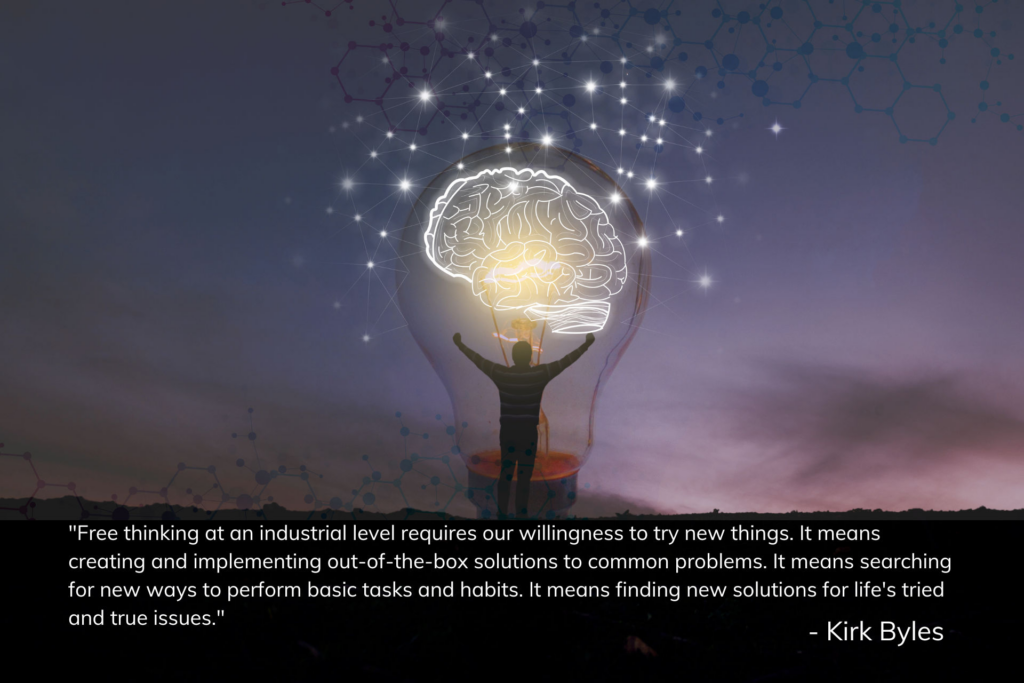
Never content My friends and coworkers can attest that I live by the basic life philosophy: “never content.” I believe in pushing boundaries and resisting the status quo, both in business and leadership. As I see it, we have two options in this life: we can sit on our laurels and wait for change or take things into our own hands and innovate. Thanks to the industrial internet of things (IIoT), our opportunities for change and transformation are endless. The more willing we are to be free thinkers — expanding the territories of our respective industries, the larger the impact we’ll witness in the world around us. The key to true transformation Most people can agree that innovation is the key to success in the industrial sector. If we keep doing things the way we’ve always done them, we won’t have much of a world left in short order. My kids are now in their twenties, and quite frankly, they’re pissed at the environment the generations before them left behind. I understand their frustration; it’s no secret that we’re facing a global environmental crisis, and without positive change, things will only get worse. If we truly want to be a part of the solution, we have to think bigger. We must become free thinkers, willing to do more than what’s been done to actually see the kind of transformation we’re looking for. Today, IIoT helps us expand our thinking. We are only on the cusp of what edge computing and data analytics can do in remote areas. Data helps us make sound decisions. When you think about where our day-to-day information is generated and how it is analyzed, you can actually imagine a world where operational managers don’t have to walk the fields, manually check pressure gauges, or physically adjust pumps to gather intel. With the right technology in place, these tasks can all be automated, which means a natural skyrocket in productivity and efficiency for remote operations worldwide. This is truly exciting because it means a shift in the culture of business, environmentalism, and sustainability. When industrial leaders and remote operations managers are given more time and space to think, they can innovate on a whole new level. Where does this lead us? Straight to the intersection of modern technology and inventiveness, where we all have the opportunity to create a safer, stronger, and more innovative world. This is great news for the modern business owner because it means the opportunity to create stronger work models and a more efficient workflow, which naturally leads to greater employee retention and better cash flow. This is truly a win for all. The big picture As a whole, technology has provided extensive upgrades within the industrial sector over the last few decades, but in reality, until IIoT came around at a large scale, just within the last few years, we didn’t have the data needed to actually know or understand what was going on. Data is great, but intelligent insight into that data is even better. Now, thanks to the ever-expanding world of technology, we can analyze data intelligently and utilize it more effectively. With this type of smart equipment on the market, field workers can do things like monitor a banana plantation from formation all the way to the supermarket. Where before, we could only know that a banana was picked and on a boat to its next destination, we now have the technology and subsequent opportunities to see things, like product quality, faster and more clearly. Free thinking at an industrial level requires our willingness to try new things. It means creating and implementing out-of-the-box solutions to common problems. It means searching for new ways to perform basic tasks and habits. It means finding new solutions for life’s tried and true issues. Sure the modern farmer may be used to turning the same lever on and off every single day, but with the right technology in place, they don’t have to. Free thinking means moving beyond the status quo to see and receive a world filled with new possibilities. Over the next few years, we’re going to see billions of dollars spent on data processing and analysis solutions. The more we know, the more we can respond to real-life situations with confidence and precision. The current financial trends and predictions are important because they reveal that our world is ready for change. Now is the time to innovate. Think bigger A crucial part of our strategy at FreeWave is implementation without dictation. This means we fully empower our customers to be free thinkers within their own environments. We want you to have full control over the information you receive and how you use it. Our job is simply to make your life easier by deploying the technology you need — edge computing capabilities, wireless connectivity, sensor technology, and more to help you manage your operation from anywhere in the world. Our IIoT solutions are designed with a simple-to-use control panel (aka our single pane of glass dashboard) so that you can run your entire operation from a singular entry point. We are no strangers to the work of free-thinking here at FreeWave (it’s part of our name as well as our culture). In our own business model, we’ve had to expand our ideas and our identity as a leader in the tech space. For many years FreeWave rode its pedigree of building and selling narrowband radios without much thought toward innovation, but then, we recognized the need our customer base faced as they searched for help in understanding what IIoT could mean for their businesses. We could’ve stayed as we were and continued to do what we did best at the time, but instead, we chose to pivot and really dig into our customers’ needs and how we could best serve them. Now, our solutions include multi-radio edge computing solutions with gateways, edge data analytics and applications, and it all started with our team’s willingness to think bigger. Free
Technology Revealed: Unraveling Data Accessibility for Industrial IoT
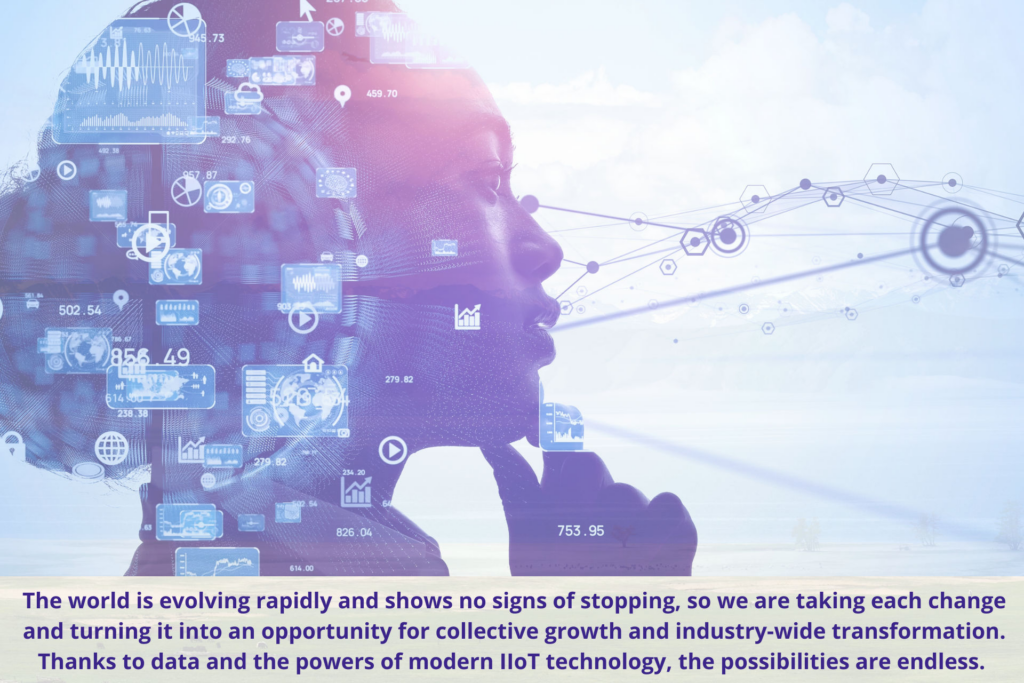
Our world is full of endless possibilities. Thanks to modern technology, we are more digitally connected than ever before. According to Statista, there will be upwards of 30.9 billion connected internet of things (IoT) devices by 2025. From smartwatches and traffic cameras to medical sensors and security systems, the more technology in effect, the more data we are able to collect. If you’ve heard it once, you’ve heard it a hundred times: data is everywhere, and it continues to be an incredible asset for leaders across industrial environments. Today, our widespread access to data allows us to make informed and intelligent decisions based on accurate intel. Something as simple as knowing soil moisture levels or the outside temperatures helps us respond to environmental needs in strategic ways. While data accessibility is undoubtedly a positive thing, it doesn’t mean much if we don’t have the tools needed to act upon those same data insights available to us, and this is where technology makes a tremendous difference, especially for industrial leaders. When we take the revolutionary power of the industrial internet of things (IIoT) and pair it with the wide range of data metrics available, we can intentionally foster better industrial environments across the globe. Our increased access to data, paired with the modern revolution of IIoT technology, allows us to respond to real-world problems with timeliness, precision and contextual intelligence. Together, this dynamic pair fosters safer, faster and more efficient environments for all. The power of time and context When it comes to data accessibility and Industrial IoT, there are many profound revelations of impact, time being just one of them. In industrial environments, timing is everything. It’s the difference between a healthy crop and a wasted harvest for the smart farmer; it’s the difference between an uncontrolled wildfire and a self-contained outbreak for the modern firefighter; it’s even the difference in what could’ve been merely a small oil leak rather than the environmental disaster we now know as the Deepwater Horizon oil spill. Data accessibility provides us with timely information on the surrounding contexts of our environments, and with the right tools, we can respond to this information faster and more efficiently than ever before. Contextual intelligence Next in line to the value of timing, lies the power of contextual data, also known as contextual intelligence. Contextual intelligence is a game-changer for the industrial leader, as it provides a deeper level of understanding and offers an enhanced sense of accuracy for production. Think of any environmental disaster, be it a forest fire, dust storm or even a carbon monoxide leak. While IoT solutions cannot prevent these events from happening, they can provide immediate insight to these occurrences based on contextual analysis. With the right sensors in place, data is retrieved and distributed, making room for timely interception. With the proper insight, operational leaders and manufacturers can observe what’s happening in critical environments and make intelligent decisions based on the contextual data available. Today, IIoT solutions allow us to control external environments virtually anywhere in the world without laborious human intervention. In this modern age, the simple switch of a button or command from a control center can adjust the outputs of remote operations everywhere. We call it a single pane of glass approach. When emergencies arise that need immediate attention, these same IIoT solutions help us respond quickly and efficiently, ultimately maximizing people’s time more effectively. The role of intelligence In addition to time and context, the third component is intelligence. Data takes the guesswork out of problem-solving and invites us to respond with precision-based strategies. Think about smart farmers, for example. With proper insight into the correct data like soil moisture levels, external temperatures, climate measurements and other relevant intel, these farmers can cultivate the most favorable conditions for a quality harvest. Without this information, farming becomes a guessing game that varies from year to year, but when this data is paired with IIoT solutions, agriculture becomes much more about intelligent strategy. Looking ahead, the digitization of farming is quickly becoming a necessary solution. Our world population is rapidly increasing every day, leading us to grow by 2 billion people in the next 30 years alone! A significant increase in people requires a significant need for accelerated food production. In fact, it’s reported that we will need to increase crop yields and harvest more food in the next 30 years than we’ve had to produce for the last 10,000 years combined. Though these statistics are extreme, they don’t have to be alarming because with the right technology in place, society will be up for the task at hand. The interconnected work of data and IIoT takes smart farming to a whole new level, making it less of a gamble and more of a controllable process from seed to harvest. Beyond the world of just smart agriculture, data impacts the role and work of IIoT solutions across every industry, including water and wastewater, electricity, oil and gas, transportation and traffic and many others. Our ability to access data empowers us to leverage IIoT technology most intelligently; it’s the “work smarter, not harder” mindset at its finest. Technological pioneers At FreeWave Technologies, we are passionate about creating real-world solutions for everyday needs across industries. In a world that is changing with rapid succession, connectivity is critically important for industry leaders, remote operations and the basic good of society. We need tools and products that help us act on data quickly and precisely, and our line of products is helping our customers do just that. FreeWave products take the complexity of industrial IoT applications and simplify them for the user, creating a digitization strategy that connects data with life. Our easy-to-use applications allow controllers to respond to their deployed assets from one place with timeliness, intelligence and precision. At FreeWave, we are pioneering a new way forward, promoting connection, safety and innovation along the way. The world is evolving rapidly and shows no signs of stopping, so we are taking each
The Unlikely Marriage of Sustainability and IIoT
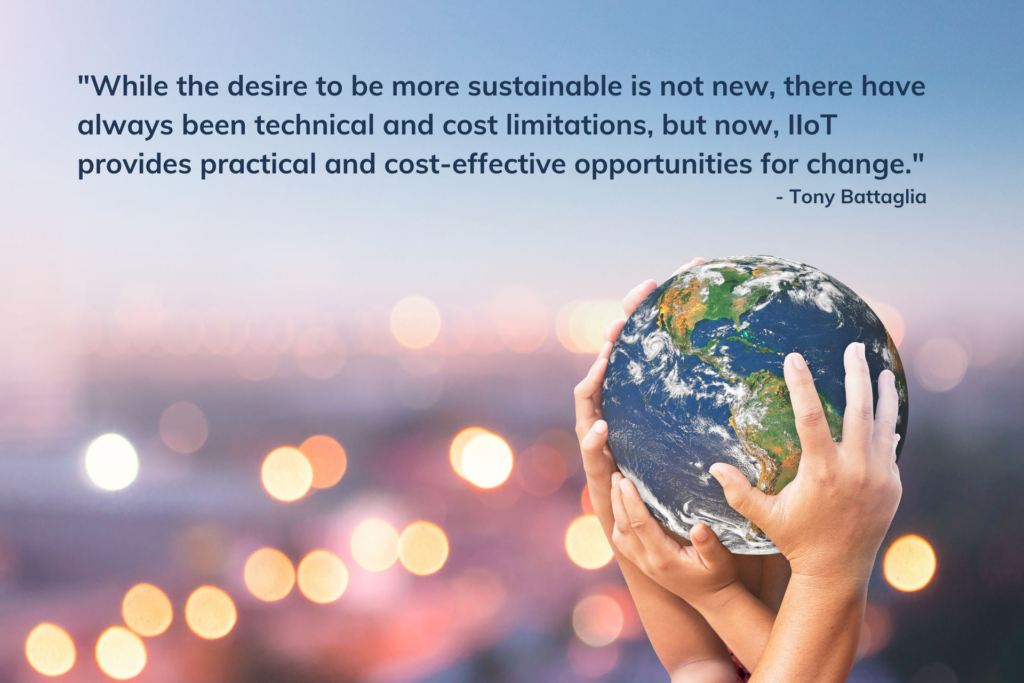
When I think about technology’s impact on sustainability, I think about home. I live in California, and earlier this year there was a fire in my area which, unfortunately, destroyed a lot of houses and affected many families. Luckily, because my city deployed industrial internet of things (IIoT) solutions for fire protection services, they were able to detect this fire early on and prevent further damage in the area. In this scenario, IIoT solutions provided timely insights which allowed the appropriate resources to respond faster, creating a better and safer future for my community. The unlikely pair Sustainability is a widespread conversation these days, and for good reason – a more environmentally conscious world equals better quality of life for us all. As such, electric cars are on the rise, paper straws are everywhere and many companies are doing their part to minimize their carbon footprint. As a collective, we are making great strides in our attempt to create more eco-friendly communities. Amidst our best efforts, however, many may not realize the positive and profound role modern technology, specifically IIoT, can have on our journey towards a greener society. This may come as a surprise, but now more than ever, IIoT is playing a key role in realizing our sustainability goals. Real-world change Today, IIoT technology is completely enhancing our approach to transformative environmental practices by providing the power of response. By implementing IIoT into our data, we can do much more than just monitor data; we can actually respond to data by pulling trends, sending out alerts, leveraging artificial intelligence and so much more. IIoT allows us to take data-driven action, and this is ultimately having a significant impact on the environment and entire industries across the globe. Industry-wide impact In 2015, The United Nations Member States all adopted the 2030 Agenda for Sustainable Development. This global partnership calls countries into action to create a stronger planet by implementing eco-friendly strategic practices to achieve 17 different Sustainable Development Goals (SDGs). Technology plays a significant role in realizing these SDGs. In fact, there are a variety of industries becoming more sustainable because of IIoT. Let’s look at energy, for example. Recently, the energy space began implementing environmental and social governance (ESG) criteria. Now, different organizations can receive access to various federal funds depending on their ability to meet ESG standards. Without the use of IIoT practices, procedures and functions, these organizations could not make the improvements needed to contribute to their environmental goals. With the use of IIoT, these same companies can effectively monitor and manage environmental assets through automated procedures that contribute to more efficient industries and remote work environments across the board. Ultimately, IIoT technology offers the insight and practical solutions needed for these companies to create positive structural changes. The benefits don’t stop there. We’ve all heard or read that our water supply is endangered, and this is not just a California issue, like many assume; it’s a widespread problem that needs immediate attention. The rapid rate of water decrease is not just a byproduct of human consumption, it is also a direct result of everyday processes, industrialization and the ever-changing climate. Today, IIoT products are providing simple solutions to monitor timely data metrics like rainfall rate and water consumption. These solutions respond to water shortages and water waste in innovative ways. Through IIoT, we now have the ability to adjust and adapt our behaviors based on data visualizations, and throughout the process, greater sustainability is achieved worldwide. The IIoT difference on finite resources With sustainability, the goal is really to manage the lifespan of an existing asset, be it drinking water, livestock, oil and gas, the list goes on, and with IIoT technology, we can better control our ability to manage these assets. While the desire to be more sustainable is not new, there have always been technical and cost limitations, but now, IIoT provides practical and cost-effective opportunities for change. At FreeWave Technologies, we’re committed to improving life’s essentials through Industrial IoT solutions. Our full line of connected IIoT network solutions bring most needed data to operations teams wherever they are and our ready-to-deploy solutions play a significant role in environmental monitoring ultimately leading to safer and more sustainable communities. When it comes to Environmental IoT™ we are spearheading a new way forward, offering solution-based products that empower industrial leaders to manage their assets simply and intentionally. Our single pane of glass dashboard creates a singular view for our customer, allowing them to track, control and respond to timely data metrics in one place instead of multiple dashboards across applications. Products that solve problems are important, and that’s exactly what we’re providing at FreeWave. We’re shifting the culture of sustainability from altruism to action, and it’s making a substantial difference. At the end of the day, I care about the world that I’m leaving for the next generation. Every day I think about my two children and the world they’ll grow up in; I want to do my best to create a place where they can thrive, and I’m excited to be a part of an organization that is achieving just that.
Technology’s Impact on Air Quality Control Monitoring
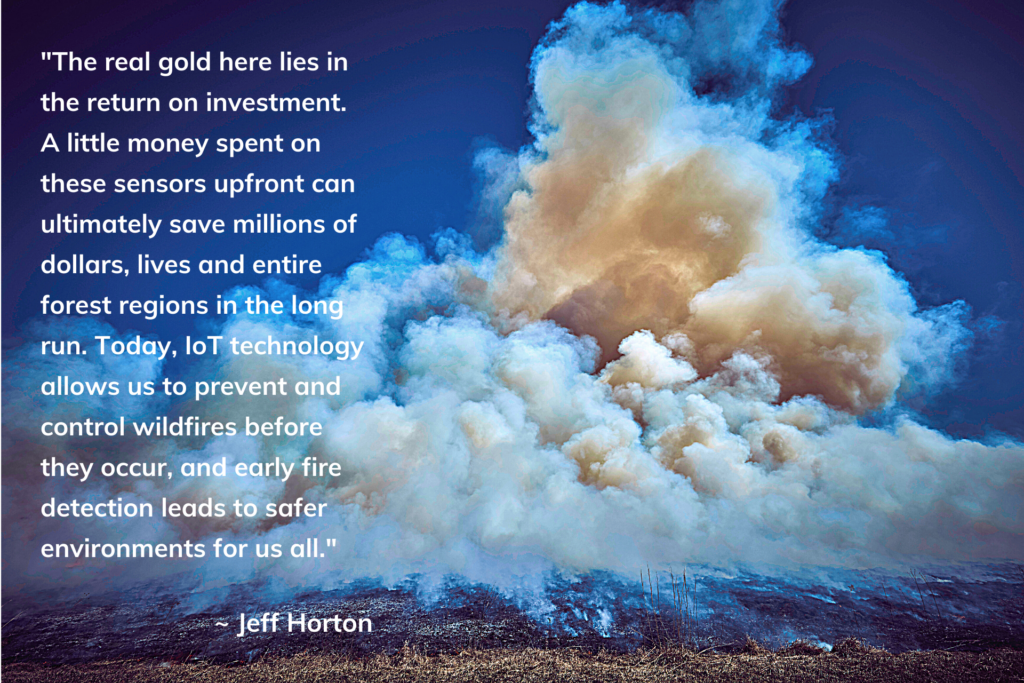
At this very moment, wildfire season is currently underway in North America, and since the start of this year alone, more than 27,000 wildfires have consumed nearly two million acres according to the National Interagency Fire Center (www.nifc.gov). Though many people hear the word “wildfire” and immediately picture a forest in California, the reality is these natural disasters are prevalent across the country. Wildfires are everywhere The Verge, a technology news website, announced recently that roughly 56% of homeowners in the United States face some sort of wildfire risk in the upcoming decades. Bottom line: wildfires are becoming more prevalent and costly every day, and these fires are affecting more than half the population and significantly changing our quality of life. Just a few decades ago, we didn’t have the technology to prevent or predict changes in the surrounding air quality, but now we do, and through it, we can create a better world. Today’s technological advancements allow us to be proactive rather than reactive when it comes to our overall health and safety. By leveraging sensor technology, we have a better chance of predicting and preventing significant changes in the environment, like a drastic shift in air quality before a wildfire begins. This insight allows us to make better decisions based on intentional insights, and our increased access to data provides us with the right information to better control our surrounding environments. Technology is powerful, and this power can and should be used to our advantage. One of my favorite ways to witness the power of technology transforming real-world issues is by exploring the ways sensor technology has a tremendous impact on air quality control monitoring. Today, internet of things (IoT) technology and satellite are the best tools for early detection and prevention of wildfires. Our approach to air quality control Believe it or not, air quality has as much impact on the world as the daily temperature. With climate change causing drastic shifts in the environment, it’s important that we pay close attention to the quality of the air we breathe, as it affects our overall quality of life. As you know, trees play a critical role in our ecosystem, so we must be very intentional and proactive about protecting the forests around us. This is where sensor technology makes a big difference. With a small machine, we can now track and predict changes in the environment and our surrounding air quality, which ultimately helps us control, prevent and predict conditions that lead to wildfires. At FreeWave, we provide autonomous sensors that are strategically placed in remote locations to track and record relevant data metrics such as temperature, humidity, wind, direction and particulate matter. These readings help industry experts know what’s in the air and how the air is changing. Once this data is collected and transmitted to the cloud, we are then able to analyze it and provide alert and proactive responses where needed. We have created a single pane of glass approach, where anyone with access can log into a portal and see in real-time what is happening in the areas surrounding their deployed sensors. The interesting thing about our sensors is that they are fully powered by solar energy, and satellite signals transmit the recorded data. We are basically offering a “buy, install and forget” resource that makes life significantly easier for industry and environmental experts. There is a ton of value here. Not only are we taking an in-depth look at what’s going on in the environment through air quality control monitoring, but we are also taking that information and transforming it into action. The real gold here lies in the return on investment. A little money spent on these sensors upfront can ultimately save millions of dollars, lives and entire forest regions in the long run. Today, IoT technology allows us to prevent and control wildfires before they occur, and early fire detection leads to safer environments for us all. A unique human aid We are making life simpler and safer for all by using technology to do what humans can’t. Back in the day, people had to sit in an operation tower for hours, looking out to catch any major changes in the environment. Today, there is a major shortage of people willing to do this kind of work, and can you blame them? As humans, we can only be in one place at a time doing one thing at a time, but with technology, this is not the case. With simple sensors, we can now monitor and control a lot more environments at a much more affordable rate. All this to say, the goal here is not to replace humans with technology as some might think; what we are really doing is enhancing human ability through the power of technology. I’ve worked in technology for over 30 years, and every day I witness its evolution. I know it’s hard to imagine a world without cell phones, but I can still clearly recall the days when cell phones took up the entire trunk of a car, and now look at the world, most of us carry the same ubiquitous smartphone in our pockets. Technology is amazing, and we have the opportunity to use it to our advantage. At FreeWave, we are taking the capabilities of mobility – LTE, 4G, Satellite, Wi-Fi, Bluetooth, 900 MHz– and marrying them with sensors. The data we gain from these sensors is saving us time, money and resources. At the end of the day, we’re taking away the need to “overthink” industry issues, like how to better prevent forest fires, and instead are replacing our questions with data-informed predictions and timely proactive responses. Every day, we strive to provide industry leaders with the tools and technology needed to spearhead faster and safer environments for us all. This is certainly not a boring business, and I thoroughly enjoy working for a company that is using technology to have an impact on the things that matter most.
Got Data? Now what?
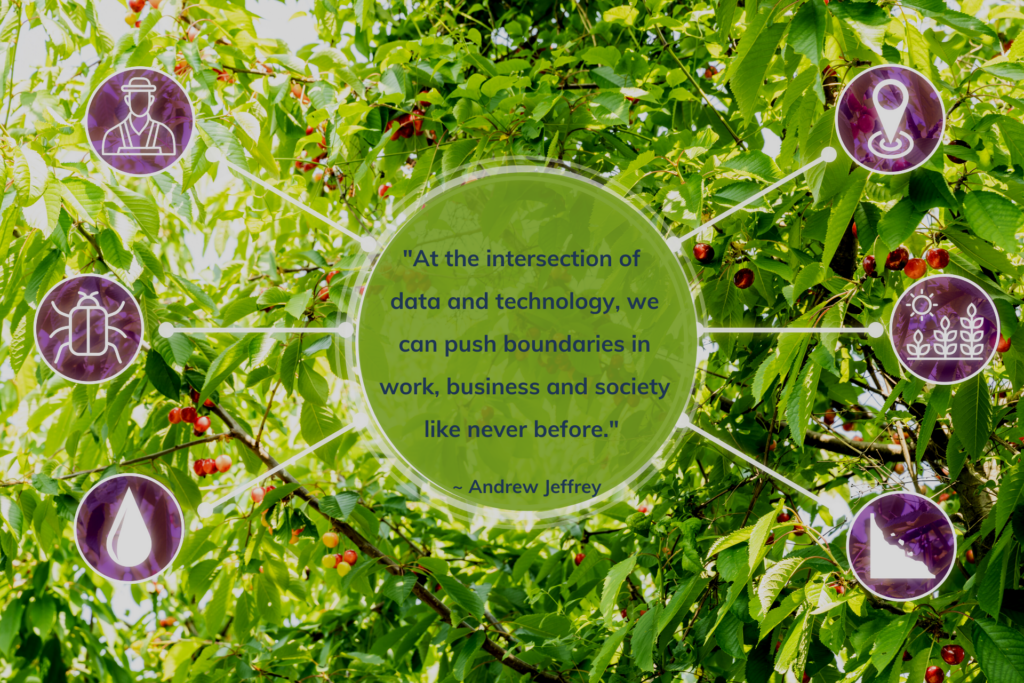
It’s hard to imagine a world without the daily convenience of modern technology. Just yesterday, I joked with my kids about the world before the internet – a time when we actually had to go to the library to look up unknown information. I can still remember the early days of my college career back in the late 90s, the internet had just come out, and we were all getting used to this new phenomenon called a “search engine.” Life has drastically changed over the last 25 years. Now, nearly all the information we want and need is at our fingertips. Today, we have more access to data than most people know how to handle. Data is all around us, collected through the day-to-day actions and reactions of our lives. When we take the time to intentionally analyze, interpret and distribute the data metrics available to us, we can make smarter and more efficient decisions. There is so much to explore, and while our increased access to data is pretty interesting, the reality is that the combination of data and modern technology can change the world. Like many things, though, there are two sides. Sure, industrial companies can capture huge amounts of data, but it also raises the question: now what? How do you put all that data to work? Breaking barriers and pushing boundaries At the intersection of data and technology, we can push boundaries in work, business and society like never before. Data insights allow us to be more precise and accurate in our day-to-day work, which allows us to be more effective and efficient. The operational benefits here are endless, including improved quality control, reduced energy consumption, enhanced safety and increased operational consistency. Just take a look at the food industry, for example. Many field workers in smart agriculture rely heavily on data insights to control, predict and create the best environments for quality crops and harvest. The more accurate their predictions, the better their harvest, and the better their harvest, the faster we receive our food through the supply chain. Today, internet of things (IoT) technology can connect remote and mobile assets, like a tractor, for instant data access, making it easier for farmers to be more efficient and effective in their work. It’s really amazing when you think about it. Data is transforming how we operate in this world, creating better environments for us all. The FreeWave impact At FreeWave, we are constantly pushing the boundaries of technology to create faster, smarter and more efficient work environments. I’ve been a part of the FreeWave team since 2019, and I am constantly amazed at the ways our technology provides innovative solutions for real-world issues. Our products enable our customers to improve their work processes, and through our single pane of glass approach, we offer a simplified experience for businesses and industry leaders to receive automated technology that transforms data metrics into real-time execution. One of my favorite use cases to discuss is FreeWave customer that uses drone technology to deliver food and other valuable resources to far-reaching areas across the globe. With FreeWave products, they can run a smarter and more efficient operation. Their robotics delivery system is combating many of the complex access challenges the world faces on a daily basis. Our IoT technology is helping them solve complex issues with simplified tech solutions, and simple solutions create more time, energy and space to focus on what matters most: people. If you need a product to help you bridge the gap between technology and data, FreeWave is your solution. We are enablement partners, helping every one of our customers accomplish their complex goals. It’s inspiring to work with brands and businesses striving to create a difference in real-world issues. Our technology plays an intricate role in sustaining work environments and supporting entire industries around the globe. Data makes the difference At the end of the day, data is more than mere statistics; data is the key to our efficiency, productivity and safety. Data makes the difference in energy consumption reduction. Data makes the difference in the overall quality and safety of our daily environments. Data makes the difference in everything. Every day we have the opportunity to use data to our advantage, and at FreeWave, we are helping industrial innovators do just that. As technology continues to evolve, we will continue to provide top of the line IoT solutions that transform data into actionable insights and execution so you can not only access a treasure trove of data, but also know exactly how to answer the age-old question: now what?
Data is everywhere, even on Mount Everest: Sensor-to-cloud and extreme environments
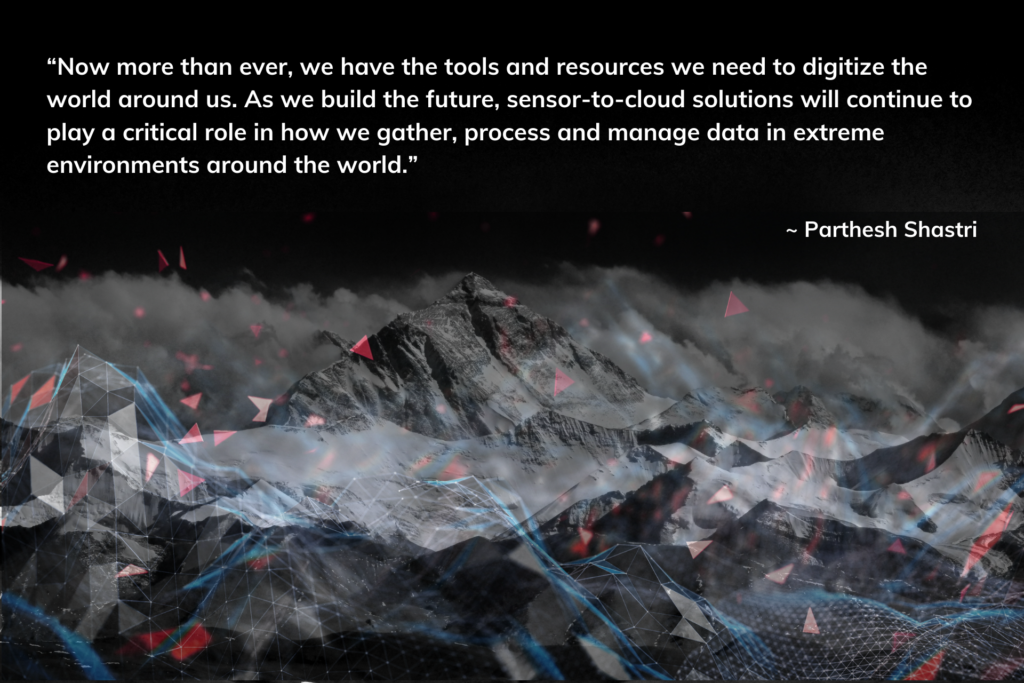
Technology – from Mount Everest to the farm It’s amazing what technology can do when paired with human will. Just a few years ago, a team of scientists made history as they trekked up Mount Everest with the goal of running environmental studies. With backpacks full of sensors (which included FreeWave technology), these men pushed boundaries to create a new normal. When we intentionally use modern technology to our advantage, we can create better, safer and more productive environments within every industry. Today, the same technology used on Mount Everest is now powering multiple earth science programs transmitting sensor data from remote environments to earth scientists, climatologists and meteorologists through cloud servers. This is just one example of many where sensor-to-cloud solutions have transformed our ability to interact with extreme environments in the modern world. A deeper look at extreme environments Typically, when someone thinks of an extreme environment, they imagine harsh, rugged terrain in a far-off remote location; however extreme environments aren’t limited by this definition. Take a large farm, for example, with a multitude of deployed assets and equipment across hundreds of acres. Traditionally, an operation like this requires an employee to physically check on the farm equipment multiple times a week, manually turning valves on and off, in addition to monitoring and controlling the overall farm environment. These day-to-day tasks are not only time-consuming but physically draining. In this case, the operational output required on the farm makes it an operationally extreme environment, and extreme environments are just one space where sensor-to-cloud solutions shine. Sensor-to-cloud in the real world Today, sensor-to-cloud systems utilize deployed sensors to collect and transmit data from remote locations. These sensors send the gathered information back to cloud servers for further research and analysis, enabling entire teams to utilize their limited time and resources more effectively. With sensor-to-cloud systems, we eliminate the often-laborious mechanics of middlemen procedures so that industry leaders can focus on what matters most. Let’s revisit that farming example. With sensor-to-cloud technology, farmers can automate the repetitive tasks of their operations. Something as simple as discrete soil sensors further allow farmers to virtually monitor their crop health, creating more time and space to focus on other high-value tasks. This gives them time, often an invaluable asset, to do what’s needed. In a sense, we can improve the productivity of an operation with an automated suite of sensor systems. Imagine the difference a network of sensors can make. The FreeWave difference For several years now, FreeWave products have been a leading resource solution for extreme environments. Our sensors were a part of the great Mount Everest expedition, and today, we have deployed sensors in many areas, including pipelines in Alaska, ice shelves in Antarctica, smart farms across the country and many other locations – rugged and traditional. We are providing the groundbreaking technology needed to monitor data in extreme environments so that our partners and customers can make the best, informed decisions for their operations. As the Chief Technology and Product Officer at FreeWave, I am constantly amazed at the impact our products have on the world. We are working with some of the major brands of our time, helping them solve massive problems affecting society at large. Our technology solutions serve entire industries, like oil and gas, agriculture, transportation and traffic, as well as many others that contribute to the well-being of the globe. It is great to be a part of a company where we can say our products are a part of the solution for life’s essentials. Every day, we help industry leaders identify their pain points and provide them with a single pane of glass product solution that helps them see the data wherever they are without the drain of additional resources. Our rich portfolio of radios, gateways, cloud software and analytics allows us to stitch together a range of packaged ready to use applications that solve our customer’s problems through simple, turn-key solutions. Sensor-to-cloud in the future Data is everywhere, and now more than ever, we have the tools and resources we need to digitize the world around us. As we build the future, sensor-to-cloud solutions will continue to play a critical role in gathering, processing and managing data in extreme environments around the globe. As I look at the world before us, I see endless opportunities to continue to leverage technology and data to build a better and more informed life.
The Importance of Data in the Life of Bees
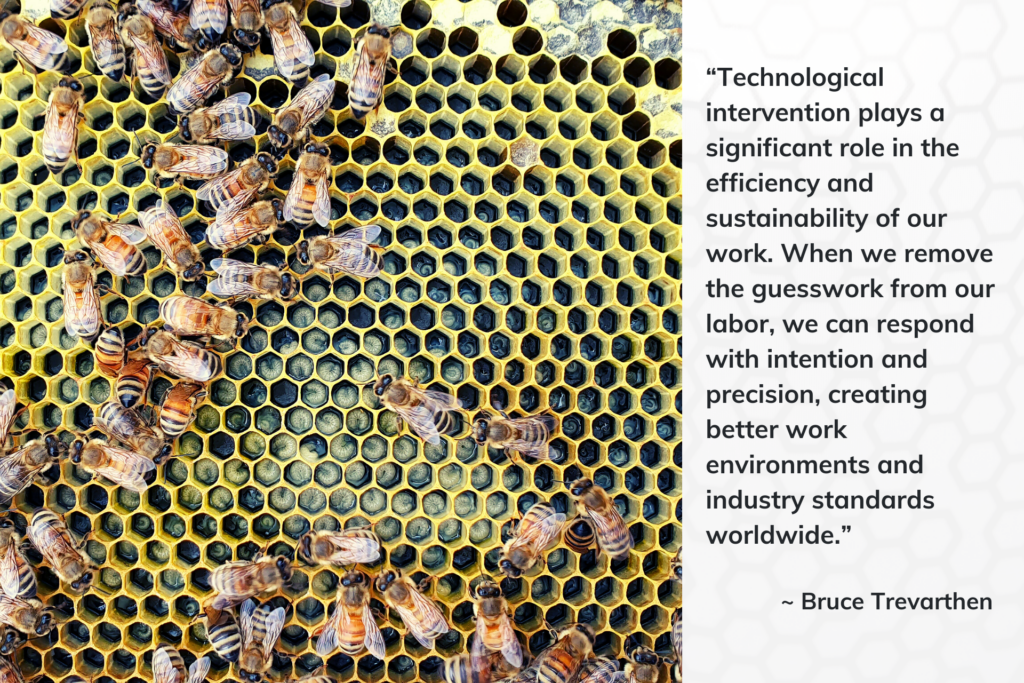
Have you heard the buzz? Data is everywhere, informing, influencing and affecting the direction and decisions of our lives daily. Due to modern technology, we now have access to a world of knowledge that was otherwise unavailable just 50 years ago. This data is gold, and when we intentionally utilize technology to mine and refine it, we can create a more sustainable world. Industrial internet of things (IIoT) technology makes a sizable and sustainable difference in multiple industries – including apiculture, the business of beekeeping. Much to my surprise, I learned that taking an intentional approach to data collection and distribution profoundly impacts the lives of bees and surrounding societies. Data and beekeeping In 2019, I went on a mission with my company ModuSense to create an IIoT solution that could aid specific industries with several deployed assets in need of environmental monitoring. After exploring applications in forestry and horticulture, our journey led us to apiculture farming and the high value commodity of honey. I believe in fully immersing myself in business and technology, so I became a beekeeper to understand the complexity of the apiculture industry better. Beekeeping is a high-value asset in New Zealand and Australia, almost exclusively because of the manuka honey variant. While traditional clover or bush honey may earn between $4-6 dollars a kilo, manuka honey can earn as high as $200 a kilo, making every drop critically important. Proper hive monitoring is essential for quality production, but beehives (especially the manuka variant) often grow in difficult terrain within remote locations, making them challenging and expensive to access regularly. Without IIoT technology, beekeeping is a naturally complicated process. Oftentimes, beekeepers must utilize helicopters to deploy and check on their hives, which is time-consuming, expensive and challenging. However, with the right IIoT solutions, such as sensors that monitor hive conditions, the beekeeping process is simplified, increasing productivity and overall harvest quality. With access to the right data, beekeepers don’t have to check on the internal conditions of their hive manually; instead, they can manipulate and control the hive’s environment from afar through sensors to create optimal conditions for production.This IIoT technology is helping us augment the beekeeping process through effective data monitoring, which is ultimately creating a simpler and more sustainable approach to hive operations. Simple solutions In many ways, beekeeping is quite similar to dairy farming, meaning better environments create better products. When cows receive access to the best pastures, they inevitably produce better milk which then creates better dairy products for us to consume. The same is true in the life of bees. When bees intentionally receive access to the best environmental conditions and quality nectar, they are able to become high-strength, crop-ready colonies which naturally produce a high-quality harvest. Effective regulation of the bees’ environment is critical to ensure the best yield, and this is where IIoT technology is making a world of difference in the apiculture industry. Bees are incredibly sensitive to barometric pressure, humidity and temperature, all of which play a role in their ability to produce as a colony; bees also need to maintain a central weight to operate at peak performance. As such, the best way to ensure a quality harvest from a beehive is to maintain the colony’s weight and manage the hive’s temperature. With proper data insights, we can do this remotely by studying and monitoring the internal collective health and conditions of the hive. Without lifting the hive’s lid, which disrupts the harvest process, we can virtually control the bees’ environment without the extra cost or time of added deployments. These insights are easy to monitor from a single pane of glass, making critical information accessible faster than a bee can fly (which is pretty fast at 20 mph!). Integrating special IIoT sensors, we developed the HiveBeats Environmental Monitoring Sensor, HiveScale V5 and Brood Monitoring Sensors that now provide precise insights into the life of a bee, which ultimately determine if and when human intervention is needed. This allows for significantly fewer errors to occur and saves time and money along the way. Data connects life – for bees and people At ModuSense, we are proud to develop timely IIoT solutions, including sensor devices, cloud-based data routing, data storage, analysis platforms and connectivity hardware to provide solutions that are easily deployed and ready to fit for purpose. In partnership with FreeWave, we are committed to accelerating hardware and software IIoT development capabilities in meaningful and immediately measurable ways for remote industries around the globe. As the CEO of ModuSense, I am proud of the work we have done to create real-life change in the world of apiculture. Our special sensors enhance the hive cultivation process by extracting critical internal data insights, all while creating a culture of industrial sustainability for beekeepers along the way. We are creating a new way forward by leveraging the power of IIoT technology to monitor data and using that insight to respond with actionable execution. Sustainability is about finding ways to use less to do more and our ModuSense sensors are doing just that for beekeepers around the globe. Today, technological intervention plays a significant role in the efficiency and sustainability of our work. When we remove the guesswork from our labor, we can respond with intention and precision, creating better work environments and industry performance worldwide. I am proud to contribute to this type of change in the life of bees and beyond.
Technology Simplified: Leveraging Data in the New Digital Era
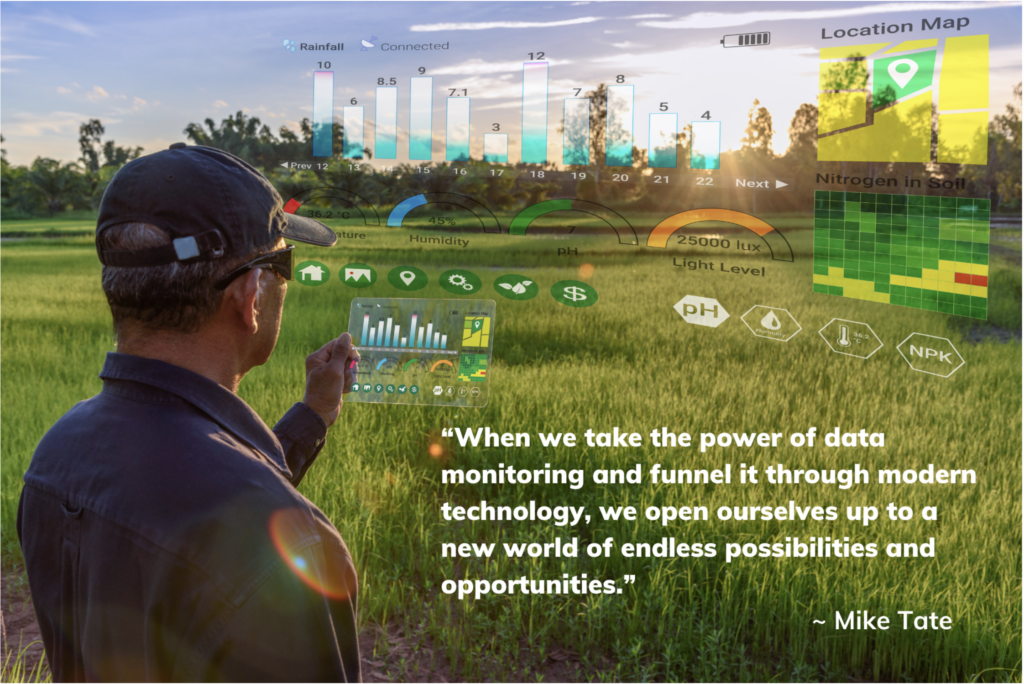
Excited by tomorrow, we face a new world filled with endless possibilities each day. Thanks to modern technology, simple sensors open the doors to our favorite restaurant, edge computing allows manufacturers to spot and correct production glitches before they happen, and high-tech traffic cameras analyze and record thousands of license plates daily to spot stolen and unregistered vehicles while also identifying suspected criminals. It’s no secret that the world is evolving before our eyes, and through the technological advancements of this digital era, we are creating a more efficient world. The power of data Data is a powerful tool of knowledge, and lucky for us, it’s everywhere! Every one of our actions is driven by a manual process of data – like the simple act of putting on a jacket when it gets cold, or an automated process of data – like a valve instinctively shutting off when a water tank gets full. Today we have the technology to effectively process, analyze and distribute data metrics in tremendously impactful ways. What does greater simplification look like for industrial leaders? Remote operations simplified When leveraged effectively, industrial internet of things (IIoT) solutions take remote operations to the next level, simplifying the work process for teams and industries across the globe. Think about some of the most popular high-value remote assets today, like drones, video surveillance, or even center pivot irrigation systems – these entities perform so well because they do what humans can’t. In mere seconds, IIoT technology can process, distribute and respond to data that would otherwise take an entire team hours, days or even weeks to achieve. In the not so distant past, industrial operations relied solely on data consumption (i.e., how much water is in the tank; what temperature is the water), but today, advancements give us the ability to respond nearly instantaneously to that collected data with actionable execution. Today we can view and control the management of an entire operation remotely on our cell phone. We can see how much water is in a tank or what temperature that water is at and automatically change and adjust the water levels and temperatures from near or far. As a result, the amount of time, resources and energy needed to run businesses has transformed entirely, and this evolution allows us to create an enhanced world and standard of work. Simple deployment Remote operations are oftentimes in rugged terrain, making them difficult or even impossible to access. At FreeWave, we solve this complex issue by providing pre-configured ready-to-deploy solutions, complete with everything needed to achieve the mission at hand. For example, through FreeWaves’s joint venture with ModuSense, we’re simplifying connectivity to cloud with a variety of pre-configured and ready to deploy monitoring and sensing solutions by supplying the entire solution with a 12-month data plan, dashboard, 12W rapid recharge solar panel, satellite connectivity and Bluetooth connectivity. You can use your mobile phone to validate the data directly from the gateway without having to wait for satellite transmission. We all know the “gotchas” when it comes to buying technology. Simple deployment means you’re ready from day one, without needing to buy additional components. Real-world impact As Chief Operating Officer and SVP of Global Sales and Marketing at FreeWave, I get a front-row seat to the real-life impact modern-day technology is having on lives, businesses and entire industries. The essentials of life have become simplified, and in the process, more people and businesses receive greater access to the things that matter most like critical information, metrics and potential outcomes. Creating a more sustainable world and preserving natural resources like food, air, energy and water have been at the forefront of IIoT since FreeWave began almost three decades ago when we brought long range, low power consumption, C1D2, 900 MHz connectivity and radio technology products to our customers. Since then, our connectivity options have greatly expanded by adding EDGE Compute, Software, Industry Protocol Conversions, Data Broker & Cloud, a complete end to end solution and with it comes the responsibility for greater environmental stewardship. We’ve all seen the devastating impact an environmental catastrophe, like the 2010 Deepwater Horizon oil spill, can have on the globe. Simple mistakes can and do cause enormous repercussions that affect us all. The truth is, with human interaction there will always be the cost of time and possible room for error. Technology, however, is different, as it allows us to not rely solely on human capacity and depend more on interconnected and advanced systems. Now, we don’t have to wait for someone to run into a situation or crisis and manually pull a lever or travel to turn off a valve. Instead, preprogrammed automation or a simple click of a button or flip of a switch from virtually anywhere in the world can control your high value remote assets. FreeWave is a technological pioneer in the 21st century. We have connected the unconnected with a reliable ecosystem of edge intelligent radios and solutions to optimize the extreme edge of remote industrial operations. Through our single IIoT platform, we provide expanded capabilities for data capture, analysis, control and automation. Our single pane of glass approach provides a simple, single vendor, one-stop-shop solution for remote operations worldwide. At the end of the day, when we take the power of data monitoring and funnel it through modern technology, we open ourselves up to a new world of endless possibilities and opportunities. It’s one thing to have data; it’s an entirely different thing to know how to leverage that data. At FreeWave, we are constantly pushing the boundaries of data monitoring and modern technology through our IIoT solutions and creating a better, safer and faster world of work for industries around the globe.
Data Connects Life: A Deeper Look at the Power of Connection for IoT Champions
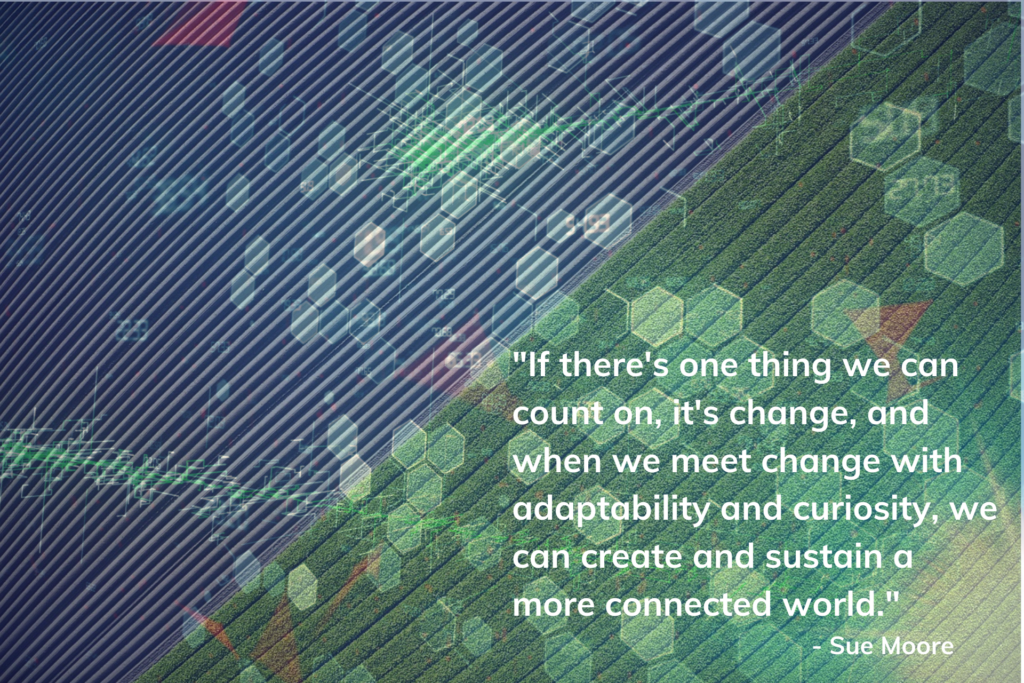
Every day, the world shifts in a new digital direction, making our lives simpler and equally more complicated all at the same time. I can vividly remember the introduction of email. I had just started my career in tech, and I kid you not, my coworkers and I questioned the efficiency of this new digital communication system. Back then, taking the time to craft an email, when I could easily make a phone call or walk to the office next door, felt foreign and unproductive, but now, decades later, I can’t imagine my life or work without the power and ease of email communication. If there’s one thing we can count on, it’s change, and when we meet change with adaptability and curiosity, we can create and sustain a more connected world, one where technology invites us to innovate, collaborate and engage with each other and the environments we live in! More technology. More data. The Mckinsey Global Survey has found that our global response to the pandemic has accelerated the rate of technology by several years. What does that mean for real people? Over time, we have discovered a new world filled to the brim with data that both informs and transforms our day-to-day lives. From smartphones to traffic management systems, the Internet of Things (IoT ) is revolutionizing life as we know it, connecting us to more people, places and systems than ever before. Connection is a powerful tool, and when harnessed effectively, it can change the world. The interdependent relationship between our natural and digital world is quite profound; in today’s society, we operate as one. In smart agriculture, for example, effective data can make a significant difference in overall crop and herd health, which, in the end, affects us all. Whether we’re on the farm, on an oil rig in the middle of the ocean or in our own backyards, technology connects us. Data is everywhere, and when this data is measured and distributed carefully, it transforms entire industries. Accessing the data you need on your terms For the last 28 years, FreeWave Technologies has pioneered a unique IoT revolution, reinventing the way industrial IoT is used in the modern market. We connect the unconnected with a reliable ecosystem of edge intelligent radios and solutions to optimize the extreme edge of remote industrial operations. Through our software, we provide IoT champions with real-time data insights to create better and more sustainable businesses. To achieve transformative operational optimization, industrial leaders need visibility into data and the ability to proactively manipulate that data and act on the insights gained from it. Our vision is to build an ecosystem of edge intelligent radios and solutions to transform the extreme edge of industrial operations into a connected part of their enterprise. Our integrated edge connectivity and computing solutions provide expanded capabilities for high-fidelity data capture, analysis, control and automation via a single industrial IoT platform that is readily scaled as each edge computing need evolves. We call it a single pane of glass. With a legacy of solving thousands of customer changes across multiple industries and deployment in 39 countries, the goal is to continue to future-proof operations so that remote work becomes more autonomous and, dare I say, simpler. It all brings us more connected with our collective purpose to create a better and more sustainable world. Data connects life. The more we see, the more we understand, and the more we understand, the more equipped we become to make better decisions. As the Director of Marketing at FreeWave, I am closely connected to the people and operations most impacted by our work. I know firsthand how powerful connection is for the IoT champions we serve, and every day I witness the power of data to transform the world. Putting it in perspective Take the water and wastewater industry, for example; in this industry, clear and controllable data insights are key to achieving effective operational management. At FreeWave, we provide these actionable data insights such as moisture levels and weather predictions through our sensor and weather monitoring technology, which ultimately allow water and wastewater industry leaders to be proactive in their business rather than reactive. A proactive and informed approach to operational management makes the difference in creating a more sustainable environment, and a more sustainable environment transforms our communities and the surrounding world. FreeWave’s productivity technology is removing barriers to data and helping industry leaders solve unique challenges like never before. Where some people may only see tech software – a little box with some wires, chips, and sensors – a much deeper reality occurs. We are all connected, and today, IoT champions get to leverage the power of this connection, along with technology and data, to create a better world, one industry at a time. I am so proud to work for a company that is connecting the world in unique and innovative ways. Every day, I see the impact of technology and what it means to be more connected through data, giving us critical insight. What we do with that data is where the magic happens. This is where we can use connectivity to push boundaries for greater innovation, make best use of our people, create safer work environments by understanding what’s happening in hard-to-reach terrain, and even take bold action to architect a more sustainable world.
Smart Farmers Use Data, Do You?
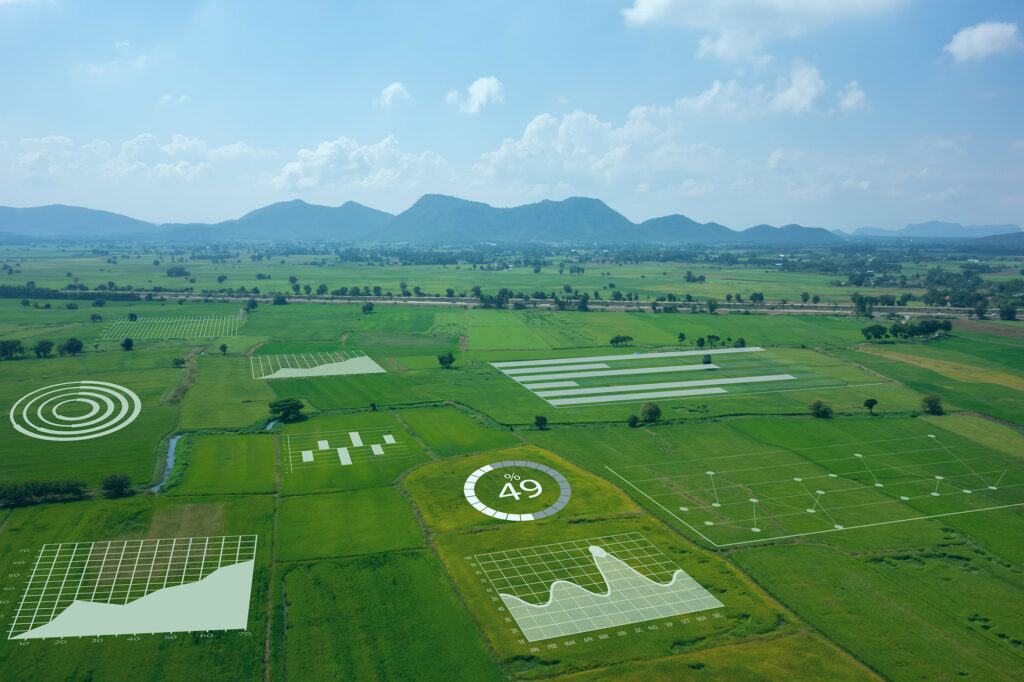
Data has revolutionized the planting, growing, and harvesting of crops on farms worldwide. Here’s why intelligent farmers use data to drive decisions and boost profits. Data, not unlike the introduction of the cotton gin during the Industrial Revolution, is rapidly changing the way farmers make decisions and operate their businesses. It’s not just to save energy or boost profit margins, either. Based on predictions that the population will reach 9.7 billion people by 2050, experts at all levels are looking closely at sustainable ways to increase healthy food production. Tech tools that rely on data are typically the cornerstone of these initiatives. But how do farmers use data exactly? And why is it wise to adopt tech into the harvest cycle? Keep reading to find out. What is data collection in agriculture? Data collection in agriculture is one of the foundational components of smart farming (also called precision agriculture). Relying on technology to gather information throughout the agriculture lifecycle, farmers can narrow the scope of their farming practices and optimize their processes. Examples of data collection in agriculture include: Crop yield data Soil moisture level monitoring Drone or satellite imagery Streamlining and enhancing farming practices Optimal harvest time Why is data critical in agriculture? As the population increases globally, experts look closely at how the agricultural industry can increase healthy food production while remaining sustainable and profitable. Using data to drive decisions and monitor operations helps farmers achieve both goals. How can the IIoT be used in agriculture? IIoT (Industrial Internet of Things) is a term used for the billions of devices worldwide now connected to the Internet. IIoT and automation in agriculture are closely linked to precision agriculture and data collection on farms. Data is typically collected via IIoT-connected sensors and tools that compile, sort, and analyze the information. These devices do more than just offer suggestions, too. Many are autonomous, which frees up farm owners to focus on the big picture of their operation. How are data and analytics transforming agriculture? Here are some ways data is revolutionizing how we plant, grow, and harvest healthy food. Off-Site Crop Production Data From the time seeds are planted to when the optimal time comes to pick a fruit or vegetable, data is changing how—and where—farmers work. Farmers no longer have to be on-site to make critical decisions. Instead, using a computer or even a smartphone, they can execute decisions from home. Healthier Soils Using drones and other imagery technologies, sensors determine soil moisture levels and overall health from the air. This not only improves the quality of the end product but makes farming more sustainable too. Soil erosion is a considerable worry in the eyes of environmentalists, who say monocropping is responsible for soil erosion in America. For example, topsoil levels in Iowa have shrunk by as much as 50 percent in Iowa, one of America’s biggest producers of corn, soybeans, and oats. One solution to this is to regularly rotate plantation sites, which data collection can help identify. Strengthened Supply Chains Food waste at the farm level is an oft-overlooked issue. Many believe waste only happens at the grocery store or once consumers take produce home with them. But one study found that as much as 30 percent of food never leaves the farm and is simply left there to decompose. Increased supplier and shipping costs and blemishes or imperfections on produce are two reasons this happens with alarming regularity. Collecting data helps farmers harvest at the optimal time and identify outlier products early in the growth cycle, making their practices more efficient. Is IIot the future of agriculture? Yes, assuming you don’t already consider IIoT the “present” of agriculture, too. Tech experts believe the IIoT will bring farming practices to the next level, making them streamlined. For example, crop-picking robots that determine ripeness and readiness of produce are becoming a regular thing on farms across America. As price points for these devices decrease, they will likely become ubiquitous. The IIoT plays an integral role in getting crops to the point that they’re ready for robots to harvest them. And as more robots, drones, and sensors are placed on farms worldwide, more data will be available to farmers to make critical decisions that lead to more products using fewer resources. What are the limitations of agriculture data systems? One of the significant limitations of agricultural data systems is a lack of connectivity in remote areas. Collecting data is essential, but if farmers can’t access the information in real-time, the data is less effective and may still lead to delays or costly errors during the growth cycle. Fortunately, FreeWave’s agricultural solutions can solve connectivity issues in the harshest and most remote environments, so farmers never have to worry about accessing their data in real-time. Infuse intelligence into your agricultural operations today with FreeWave. Click here to learn more.



